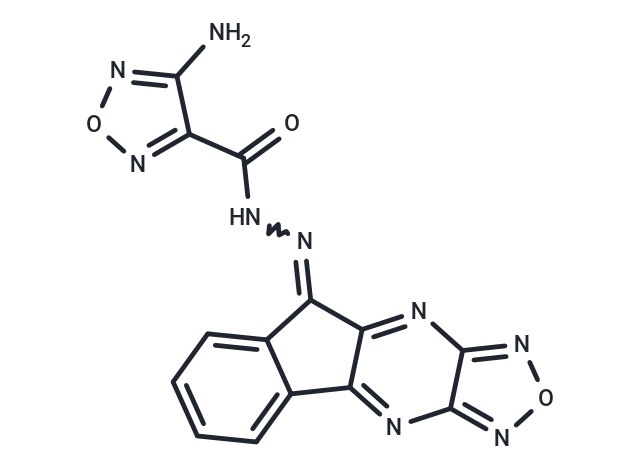Shopping Cart
Remove All Your shopping cart is currently empty
Your shopping cart is currently empty
LQZ-7F is a small molecule survivin dimerisation inhibitor with anticancer activity.LQZ-7F induces proteasome-dependent survivin degradation, mitotic arrest, and apoptosis, and blocks human tumour growth in mouse xenograft assays.

| Pack Size | Price | USA Warehouse | Global Warehouse | Quantity |
|---|---|---|---|---|
| 1 mg | $82 | In Stock | In Stock | |
| 5 mg | $250 | In Stock | In Stock | |
| 10 mg | $356 | In Stock | In Stock | |
| 25 mg | $568 | In Stock | In Stock | |
| 50 mg | $762 | In Stock | In Stock | |
| 100 mg | $1,010 | - | In Stock | |
| 200 mg | $1,370 | - | In Stock |
| Description | LQZ-7F is a small molecule survivin dimerisation inhibitor with anticancer activity.LQZ-7F induces proteasome-dependent survivin degradation, mitotic arrest, and apoptosis, and blocks human tumour growth in mouse xenograft assays. |
| In vitro | LQZ-7F and LQZ-7F1 treatment at 2.5 μM for 72 hours inhibited the viability of prostate cancer cell lines PC-3 and C4-2, as determined by MTT assay. |
| In vivo | LQZ-7F was administered at 25 mg/kg via intraperitoneal injection once every 3 days for a total of 8 treatments. On the 30th day after treatment, it was found to inhibit the growth of xenograft tumors[1]. |
| Molecular Weight | 349.26 |
| Formula | C14H7N9O3 |
| Cas No. | 354543-09-2 |
| Smiles | O=C(NN=C1C2=NC3=NON=C3N=C2C4=CC=CC=C14)C5=NON=C5N |
| Storage | store at low temperature | Powder: -20°C for 3 years | In solvent: -80°C for 1 year | Shipping with blue ice/Shipping at ambient temperature. | |||||||||||||||
| Solubility Information | DMSO: 2 mg/mL (5.73 mM), Sonication is recommended. | |||||||||||||||
Solution Preparation Table | ||||||||||||||||
DMSO
| ||||||||||||||||
| Size | Quantity | Unit Price | Amount | Operation |
|---|

Copyright © 2015-2026 TargetMol Chemicals Inc. All Rights Reserved.